It’s the most overused analogy in business and sports: “Success is Like an Iceberg”
An oil painting is a lot like that iceberg. On the surface is a relatively thin layer of oil paint that (if done correctly) forms the shapes of wings, antlers, clouds and grass. It glimmers beneath the perfectly balanced lighting of a Charleston ballroom, floating between an elegant custom frame. What it’s actually made of is much, much more. In this blog, I’ll pull the curtain back and show you just what goes into the annual SEWE feature painting.
More Than a Canvas
The featured isn’t just a solitary canvas, destined for auction at a black tie event among cocktails and crab cakes – it’s a symbol for SEWE. It’s used on every piece of marketing material from daily passes to billboards on I-26. It sets the tone for all digital and print communication to SEWE patrons. So, it’s got to be bright, bold and on point.
It’s also got to be done well in advance of the show. All those marketing materials take time to design, revise, proof and print. My deadline for finishing the piece was the middle of August, 2022, which meant my wheels had to start turning in early June to get a concept going in time.
Birds of a Feather
To start with, I had several phone calls and emails with the SEWE crew to discuss subject matter. We talked about the history and future of the event, how the piece would be utilized and what it needed to accomplish. I had three main concepts that I liked: a lab in a canoe, a group of mourning doves in flight, and a trio of pheasants. After some deliberation and thought, we chose the pheasants and I got to work.
Coffee and Photoshop
I’ve worked in marketing and advertising for years as a graphic designer and illustrator, and I often tell my clients: “All things are possible with Jesus and Photoshop.”
It’s true. During past covers of Outdoor Life, I would take reference photos and mock them up into a composition so the editorial crew knew exactly what the cover would look like before I actually painted anything. That way they could set copy and start the design process while I was busy painting in my studio. Before I ever put brush to canvas, the cover layout was complete, right down to the page numbers.
I used that same method on this feature painting, sending the SEWE crew several mockups for us to look at and evaluate for color and composition ahead of their marketing push. The piece needs to work for material of all shapes and sizes, so having a solid idea at the start was helpful for all of us.
Form Follows Function
Vince Lombardi once said “Success demands singleness of purpose.” Nothing could be more true of the painting process. Up until this point, I was visually brainstorming as many ideas and concepts as possible. Now that we’ve selected a concept, I have a single purpose: to bring it to life on canvas.
One particular challenge was the size. At 48” x 36” it’s a large canvas. I work fairly quickly, but covering 12 square feet of canvas with brushes that are rarely more than a half inch wide is a marathon, not a sprint. I chose to approach my canvas in a blue-collar, workmanlike fashion, showing up each day prepared to put in my time. I listened to Phil Jackson’s Eleven Rings audiobook as I worked, and couldn’t help but notice the similarities between a long NBA season and a large painting: it’s a process that requires focus and patience, and you’ve got to finish well.
The roosters were easy – their bold colors and animated poses were fun to paint and I was confident in the piece. I seemed to breeze through them and was making great progress, like the ’96 Bulls starting off strong. Then, I hit a snag with the hen pheasant.
In nature, she’s brown, finely detailed and purposefully designed to blend in with her surroundings. In my painting, however, I needed her shape to serve a supporting role to the lead characters, the roosters. Twice I painted her too detailed, and twice I scraped the canvas clean and started over. For a while I thought I’d never get it right. I actually lost sleep over a hen pheasant. But after two extra days in my studio, I finally got her to a point I was satisfied.
After finishing, I let the piece sit for three days before looking at it again. I wanted to see it with fresh eyes. Not the eyes of someone that’s agonized over a hen pheasant’s primary feathers for days, but the eyes of someone walking into the Charleston Place ballroom and experiencing it for the first time. When I do this, I always find something to change – a highlight that I missed or a shape that I misjudged. It’s likely that nobody would notice these details…but me.
Finishing Touches
At this point, I took a high-resolution photo of the painting to send to the crew at SEWE. (It’s actually 6 photos, each taken from a different section of the painting, then stitched together in Photoshop to produce a single digital file). It’s this final image that they use in their print ads and marketing materials, as well as for my own archives and posts like this one.
For a frame, we looked at countless options before I chose a custom triple-stacked frame, meaning we put a frame on top of a frame on top of a frame. This adds interest, dimension and width that you can’t get in a single moulding. I’ve never framed a piece this way before, but if anything deserves this much extra time, money and attention, it’s the SEWE feature.
Back to the Surface
What you see in the final image is the tip of the iceberg. Now, I hope you see what’s beneath it. The artistic process is a deeply personal one, a process that requires me to consistently show up and deliver, day in and day out. And every once in a while, you’re given the opportunity to create something as special as the SEWE feature painting. It truly is #WildlyOriginal, and I hope you come to this year’s event as we celebrate 41 years of SEWE and send it on to a permanent home.
 "The Departure" (48"x36" oil on linen) is SEWE's featured painting for 2023 and will be auctioned off during the VIP Gala at the Charleston Place Hotel on Thursday, February 16.
"The Departure" (48"x36" oil on linen) is SEWE's featured painting for 2023 and will be auctioned off during the VIP Gala at the Charleston Place Hotel on Thursday, February 16.



1 comment
Are you going to be printing canvas editions of the new pheasant painting?